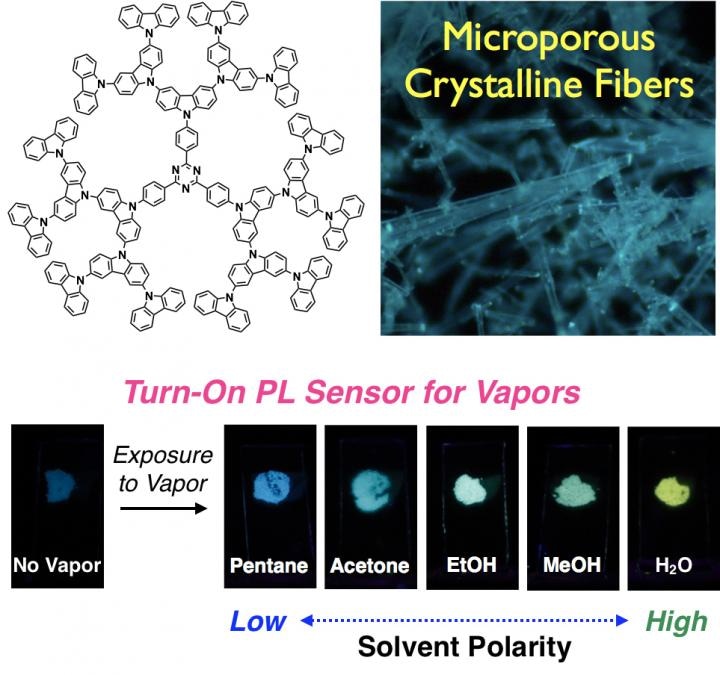Mar 1 2018
 CREDIT: University of Tsukuba.
CREDIT: University of Tsukuba.
Sensors play a vital role in detecting pollutants and keeping track of environmental conditions. Fluorescent sensors have the ability to detect the presence of a pollutant by analyzing the change in intensity and/or wavelength of light emitted by the pollutant.
Specifically, fluorescent sensors that exhibit changes in the color of emission are appealing as these changes can be readily detected with the naked human eye, rendering them easy to use.
Recently, scientists headed by the University of Tsukuba have created an efficient fluorescent sensor for solvent vapor, based on a branched molecule known as a dendrimer. The dendrimer is formed of an electron-accepting core linked to electron-donating branches. Subject to specific conditions, the dendrimer self-assembles itself into fibers that form a crystalline structure including a number of pores, which assists in the adsorption of solvent molecules.
Slow diffusion of methanol or acetonitrile into chloroform solutions of the dendrimer yielded crystalline microfibers with high porosity. Under other conditions, we obtained amorphous microspheres of the dendrimer that lack pores.
Sae Nakajima, University of Tsukuba
The team analyzed the crystal structure of the dendrimer, by adopting diffraction methods, and discovered that the microfiber structure’s pore volume was more than 70% of the total crystal volume. The higher pore volume of the crystalline dendrimer microfibers resulted in higher increase in their gas adsorption ability when compared to that of the spheres developed under different conditions.
Films of the crystalline dendrimer exhibited an emission behavior that was appropriate for being adopted for solvent sensing. Upon being exposed to solvent vapor, the emission intensity of the films was increased to a large extent and there was a rapid change, within just two seconds, in their emission color, indicating the solvent polarity. This suggests that a single film can be used to detect different kinds of solvents. For instance, the color of a film was blue in a fluorescence microscopy image before being exposed to the solvent, and it turned yellow after being exposed to water vapor or green after exposure to methanol. Once the solvent vapor was removed, the film returned to its usual color, enabling it to be reused.
Dendrimers typically possess dense amorphous structures. The porous crystalline structure formed by our dendrimer under specific conditions increased its adsorption capacity and sensing ability, revealing the importance of crystalline structure in fluorescent sensing by dendrimers.
Yohei Yamamoto, University of Tsukuba
This study shows that the visible sensing of solvent vapor can be achieved by using crystalline dendrimers that have porous structures. These dendrimers look propitious to be used in differentiating between organic materials and gases, thereby rendering them appealing for use in environmental sensing applications.